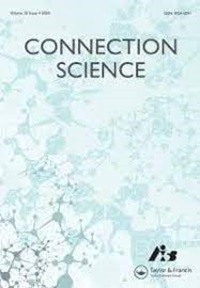Fidan:协助养老院医疗保健机器人的预测服务需求模型
IF 3.4
4区 计算机科学
Q2 COMPUTER SCIENCE, ARTIFICIAL INTELLIGENCE
引用次数: 0
摘要
人口老龄化在急剧增加对护理人员需求的同时,也增加了护理人员的工作量。尽管一些养老院使用机器人来完成部分工作,但这类机器人是执行固定任务的机器人。实际应用场景中的需求往往会发生变化,因此机器人执行既定任务并不能有效减少护理人员的工作量。为了给养老院的护理人员提供切实的帮助,我们创新地将LightGBM算法与机器学习解释框架SHAP (Shapley Additive explanatory)相结合,运用综合数据分析方法,提出了服务需求预测模型Fidan (Forecast service demand model)。该模型基于相关健康管理数据(包括生理和睡眠数据)、查房数据以及物联网设备收集的护理服务数据,对养老院养老服务需求进行分析和预测。在训练过程中基于网格搜索对模型参数进行优化。实验结果表明,Fidan模型预测养老服务需求的准确率为86.61%。本文章由计算机程序翻译,如有差异,请以英文原文为准。
Fidan: a predictive service demand model for assisting nursing home health-care robots
While population aging has sharply increased the demand for nursing staff, it has also increased the workload of nursing staff. Although some nursing homes use robots to perform part of the work, such robots are the type of robots that perform set tasks. The requirements in actual application scenarios often change, so robots that perform set tasks cannot effectively reduce the workload of nursing staff. In order to provide practical help to nursing staff in nursing homes, we innovatively combine the LightGBM algorithm with the machine learning interpretation framework SHAP (Shapley Additive exPlanations) and use comprehensive data analysis methods to propose a service demand prediction model Fidan (Forecast service demand model). This model analyzes and predicts the demand for elderly services in nursing homes based on relevant health management data (including physiological and sleep data), ward round data, and nursing service data collected by IoT devices. We optimise the model parameters based on Grid Search during the training process. The experimental results show that the Fidan model has an accuracy rate of 86.61% in predicting the demand for elderly services.
求助全文
通过发布文献求助,成功后即可免费获取论文全文。
去求助
来源期刊

Connection Science
工程技术-计算机:理论方法
CiteScore
6.50
自引率
39.60%
发文量
94
审稿时长
3 months
期刊介绍:
Connection Science is an interdisciplinary journal dedicated to exploring the convergence of the analytic and synthetic sciences, including neuroscience, computational modelling, artificial intelligence, machine learning, deep learning, Database, Big Data, quantum computing, Blockchain, Zero-Knowledge, Internet of Things, Cybersecurity, and parallel and distributed computing.
A strong focus is on the articles arising from connectionist, probabilistic, dynamical, or evolutionary approaches in aspects of Computer Science, applied applications, and systems-level computational subjects that seek to understand models in science and engineering.
 求助内容:
求助内容: 应助结果提醒方式:
应助结果提醒方式:


